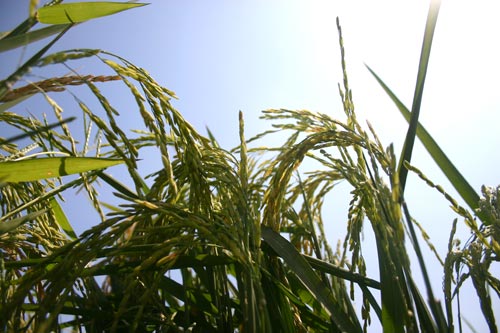April 12, 2011

It is a typical Arkansas spring with some fields too wet, some too dry and some just right. If you have planted rice and are in areas where timely rains have occurred, I hope you have taken advantage of them to get residual herbicides activated.
I have written about pre-emergence and delayed pre-emergence treatments in previous articles. I received several favorable comments on the article on Bolero. While this herbicide likely will not become a “go to” material like Command, it sure can have a nice fit in certain situations.
After the delayed pre-emergence herbicides, the next step will be early postemergence herbicides. With those, the objective is to kill any weeds that have emerged, and also to get some additional residual into the program.
Some early postemergence herbicides such as propanil, Ricestar HT, Beyond, and Clincher control only emerged weeds. Some residual herbicides such as Command, Bolero and Prowl have little activity on emerged weeds.
Then there are herbicides such as Newpath, Facet and other quinclorac products, and combination products like Clearpath, Broadhead and RiceBeaux that have both postemergence and residual activity. Most early postemergence applications usually involve some mixture of these herbicides and the number of potential combinations is nearly infinite.
The key is picking a mixture where both the postemergence and residual components do what you need them to.
Hopefully, if you have had good activation of pre-emergence or delayed pre-emergence treatments, you will not have a lot of emerged grass pressure. Quite often this just means knocking out some junk weeds with a propanil treatment and concentrating on extending the residual control and mixing modes of action.
A lot of folks are splitting their Command treatments, so this is a good place to add some more Command. Quite often there will also be some Facet or quinclorac in the mix.
If you use RiceBeaux instead of propanil you add another mode of action with the thiobencarb component.
In Clearfield rice the early postemergence application will normally center on Newpath. If you use Clearpath you add a quinclorac component. Some will add Command or use Newpath plus Command. RiceBeaux plus Newpath has also become an increasingly popular treatment. These are examples and there are a lot of ways these can be tweaked or substituted for.
If you are in a situation where residual herbicides were not used or have not worked and a lot of emerged grass is present, then the situation changes dramatically. In these situations I recommend dropping a big hammer right now to get the emerged grass out of the picture. It seems that more and more that we can’t kill grass if it gets past about the three-leaf stage. Good treatments wind up giving about 70 percent control.
From there we wind up pounding it with two or three more treatments and have grass going to seed at the end of the season. That is a worst-case scenario for resistance development.
Dropping the big hammer at the two-leaf to three-leaf rice stage to me usually means something like 24 ounces of Ricestar HT with a half pound of Facet or quinclorac in conventional rice or a high rate of Newpath plus a half pound of Facet or equivalent in Clearfield rice.
Give the treatment a week to 10 days and be ready with something with more activity such as Regiment as a follow up treatment. I occasionally recommend Regiment as the first treatment but usually prefer to use it as a preflood treatment when the rice is larger.
Of the two primary situations described above, I much prefer the one where the residual has done its job and the first postemergence application is a maintenance treatment. Those are easy. However, there are always plenty of the other situations where a lot of grass has emerged. In these, do whatever it takes to kill it right now.
About the Author(s)
You May Also Like




